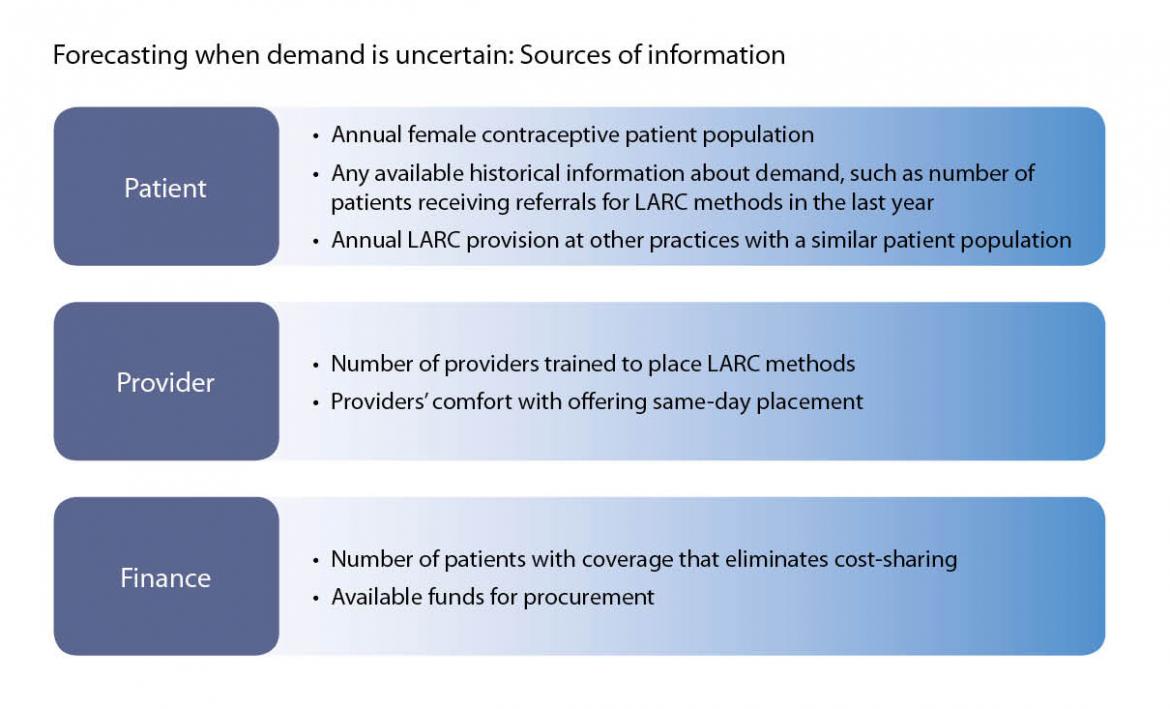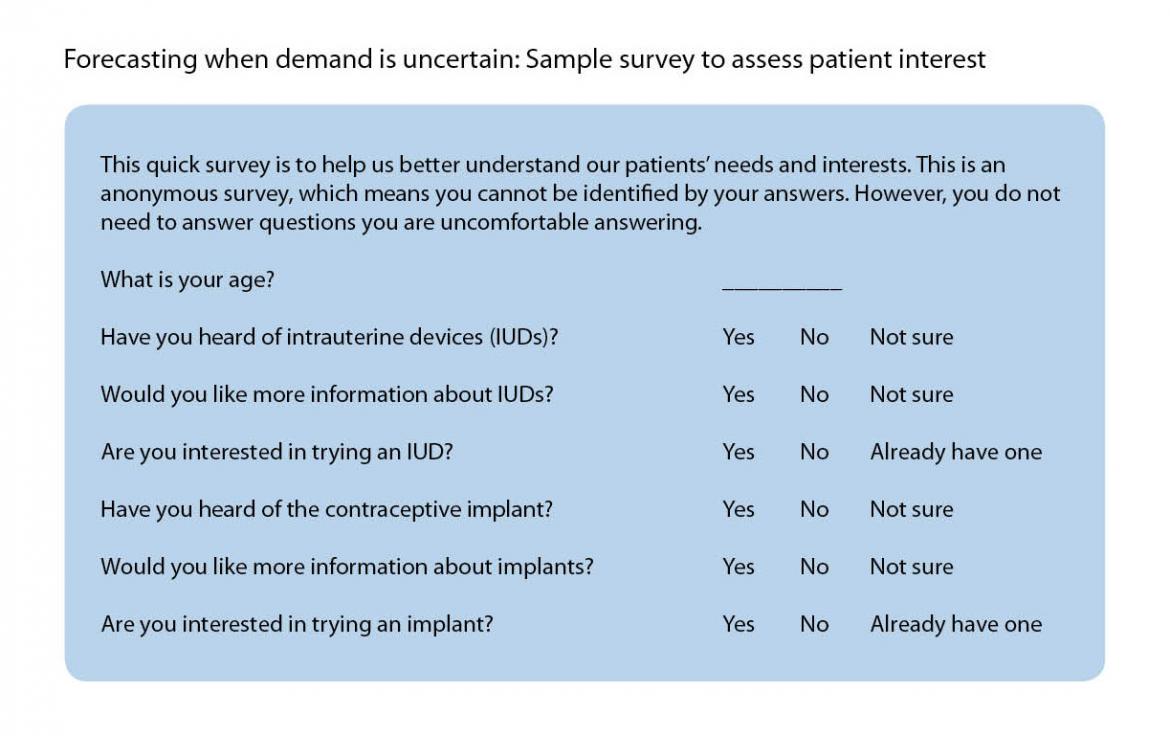If a practice has not stocked IUDs or implants before, it may be challenging to estimate patient demand. The Reproductive Health Supplies Coalition recommends forecasting demand for new contraceptive products based on a combination of patient, provider, and finance factors [10]. The figure below shows possible sources of information about each of these factors.
For example, if a provider is able to count the number of referrals given for LARC methods in the last year, this figure can be divided by 12 to find average monthly demand. A reasonable starting point might be to order a three-month supply.

A provider may also be able to assess demand by screening patients for their interest in LARC methods when they are scheduling an appointment or using a brief survey filled out in the waiting room. See a sample survey below.

This survey is only intended to assess potential demand for LARC methods. Quality family planning care should include counseling patients on all methods regardless of how a patient responds to the survey.
Providers may find that the cost of the LARC method determines how many a practice can afford to stock. See the sections on obtaining supplies and lower cost supplies for more information on defraying the costs of procurement.